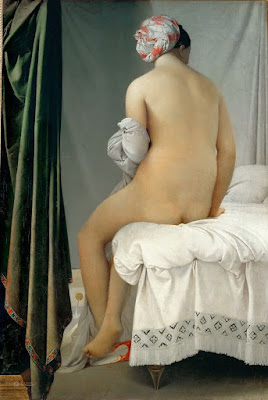“I wish I could paint, but…” What’s standing in your way?
| Breaking Storm, by Carol L. Douglas, available through Folly Cove Fine Art. |
Yesterday, our pastor listed these five common barriers to adult learning:
- Lack of time
- Lack of balance (juggling commitments)
- Lack of motivation
- Lack of flexibility
- Lack of a supportive community
Lack of time is especially true of young parents and people starting in their careers. Having once been there myself, I empathize. But before you give up, consider how much time you spend on sports, social media, television, or shopping.
 |
| The Dooryard, by Carol L. Douglas. Available. |
We all start with exactly the same number of hours, but we choose to use them in different ways. If you are passionate about art, you can draw even when it’s impossible to get out the easel and paint. If you can’t commit to a class, buy a book. If you want to sing, spend ten minutes a day practicing scales, or sing while you drive. At the end of a year, you’ll still be one year older, but you’ll have something to show for it.
That segues neatly into the question of balance. In my thirties and forties, I was an overly-avid volunteer. Looking back on it, I would have been more helpful to society if I’d just concentrated on painting. There are other people who are just as out of whack about their careers or their kids’ sports.
The ability to waste time is a healthy trait of the young, and it is closely tied to mental flexibility. We have to practice it, or we lose it. If you can’t stand change, ask yourself why—and then do something about it. Your ability as a lifelong learner depends on it.
 |
| Sunset sail, by Carol L. Douglas, available through Folly Cove Fine Art. |
You might think motivation is never an issue for artists, but inspiration ebbs and flows there as in everything else. Counterintuitively, creativity and flexibility work best if they’re on a stable framework. I keep a routine and schedule so that my body and mind are ready to start work at the same time every day. The details of my studio time are less important than that I was there. Decide on how much time you can commit to learning your new skill, and then stick to that, even if it’s only ten minutes a day.
Community is underrated in our atomized modern society. It provides mutual support, new ideas and happiness. Kids naturally have this (when they’re in school). But adult learners need community as well. One of the things I love about plein air painting is the community of fellow artists.
| Bend in the Road, by Carol L. Douglas, available. And, yes, the theme of all these paintings is aloneness. |
I am a synthetic learner—I never have new ideas; I just recast what I hear and see in different ways. Other people are my primary resource. Having taught for many years, I think this is quite common. It’s very rare for humans to achieve greatness in isolation.
I’m doing a FREE Zoom workshop on Friday, October 2 at 5 PM. Consider it Happy Hour, and join me with a glass of wine, a spritzer, or whatever else. We’re going to talk about studying painting. What should students expect to get from a workshop or class? What should teachers offer? Have you always wanted to try painting but been afraid of classes? Are you taking classes but want to get more out of them? Join us for a free-ranging discussion.
While this is in advance of my Find your Authentic Voice in Plein Air workshop in November in Tallahassee, everyone is welcome. There’s absolutely no charge or obligation. Signups are already brisk, so register soon!


